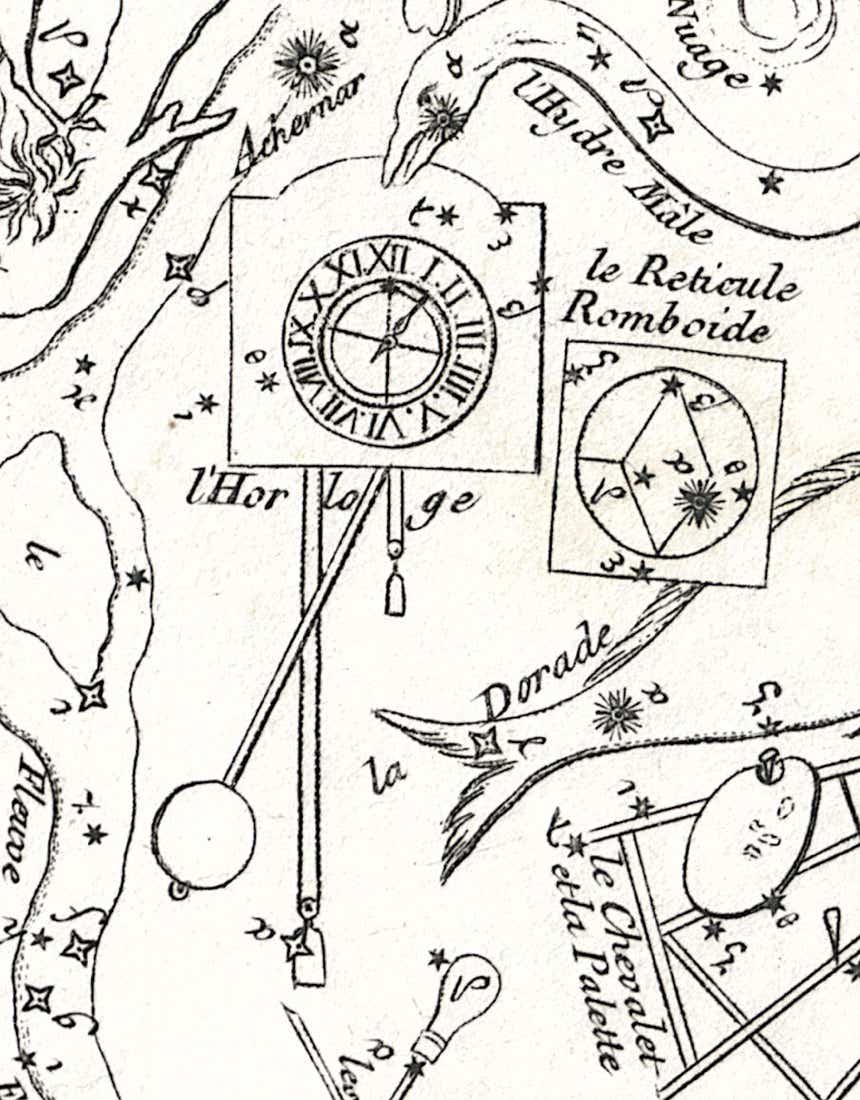Lacaille’s Horologium
Lacaille showed Horologium under the name l’Horloge on his original 1756 planisphere, as seen on the illustration below. The name was Latinized as Horologium on the second edition of 1763. Lacaille assigned Greek letters to 10 stars of Horologium in his preliminary catalogue (an 11th star was added in the final version), but showed only six of them on his charts.
Lacaille depicted a simple pendulum clock of the type invented by the Dutch scientist Christiaan Huygens in 1656, but with the addition of a third hand marking seconds which Huygens’s original did not have. Lacaille’s own observatory clock was made by the leading Parisian craftsman Julien Le Roy (1686–1759).
Horologium lies next to another of Lacaille’s new constellations, now known as Reticulum, which represented the diamond-shaped reticle of threads in the eyepiece of his telescope. Both the clock and the reticle were vital components for accurate timing of transits so it was only natural that they should be placed side-by-side in the sky.
The clock dial was illuminated by a faint lamp so Lacaille could read the time and jot down his observations. He described his observing procedure as follows: ‘As soon as a star entered or left the plates of the reticle, the observer, closing his right eye, which was only used to look in the telescope, and keeping his left eye open, turned a little to present a little paper to the light of the dark lantern at the clock. He recorded his observation on it and quickly returned to the telescope.’
This illustration of Horologium comes from a copy of Lacaille’s original planisphere published in the Atlas Céleste of Jean-Baptiste Fortin. In Fortin’s version the constellation names were still given in French but had Greek letters added. The head of Hydrus is at the top, Reticulum to the right, Dorado lower right, Caelum below, and the river Eridanus at left.
(Image: Author’s collection)
© Ian Ridpath. All rights reserved
◄ Back to Star Tales – Horologium
Lacaille’s description of how he timed transits of stars using his clock and reticle, from his book Coelum australe stelliferum of 1763.
